The Battle of Połonka, fought on June 28, 1660, showed the true power of the hussars. And it proved how effective the Hussar copy was. How many walkers could she beat?
The Battle of Połonka is particularly interesting because it shows how hussars - even without a lance, but under favorable conditions - could smash soldiers with pikes. And also how pikemen in more typical conditions were able to defend themselves against hussars without a lance. In addition, it demonstrates the enormous effectiveness of the hussar lance, which was able to penetrate as many as six walkers at once!
Happy year 1660
The winter counteroffensive of the Polish and Lithuanian troops, including the battles of Mogilev and the Domanami (1655), did not bring the expected effect. With the advent of spring, the Muscovites again moved west - deep into the Commonwealth. In this procession, among other things, they seized, plundered and burned Vilnius (August 1655). They did not worse in Korona, where, together with the Cossacks, they reached Lublin and temporarily seized it (October 1655).
However, the simultaneous progress of the Swedish army disturbed Tsar Alexei I Mikhailovich, who on 9 September 1655 proclaimed himself ruler of Lithuania and the Ruthenian lands that were part of the Crown. On May 17, 1656, Moscow declared war on Sweden. Muscovites set off to conquer the Swedish part of Livonia, which meant that Poles and Lithuanians relieved in the east could focus on the Swedes.
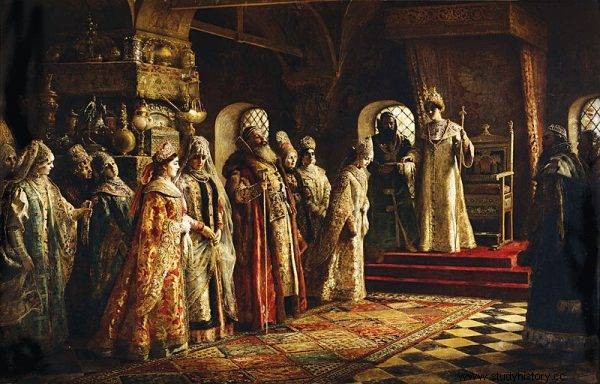
The progress of the Swedish army disturbed Tsar Alexei I Mikhailovich, who on 9 September 1655 proclaimed himself the ruler of Lithuania and the Ruthenian lands that were part of the Crown.
The period between 1655 and 1660 was full of dramatic events, arrangements and sudden alliance changes. Apart from the aforementioned Cossacks, Muscovites and Swedes, the Tatars, Prussians, Transylvania and Austrians participated in the fight in the territory of the Republic of Poland. Finally, on May 3, 1660, a peace treaty in Oliwa was concluded with the Swedes. Thanks to this, Lithuanian and Polish soldiers could be directed to the east - against the troops of Alexios I, still occupying huge areas of the Republic of Poland.
The year 1660 was called a happy year in Polish historiography . At that time, not only was the war with the Swedes ended, but also - thanks to a series of victorious battles with the Muscovites - a significant part of Lithuania and the south-eastern Crown were freed from the Moscow occupation. One of these battles was fought at Połonka.
Number of troops and place of battle
The army of the Republic of Poland, taking part in this battle, numbered about 20 thousand. people. Among them there were 11 thousand. soldiers (8,000 cavalry with 3,000 dragoons and infantry), and the rest was loose domestics. It was commanded by Stefan Czarniecki and Paweł Jan Sapieha.
The Moscow army under the command of Ivan Chowanski had about 8,500 soldiers (of which 4,000 were infantry, and 4,500 were cavalry) and at least twice as many domestics. The latter, equipped with banners, was used by Chowaniec in the field as a regular army. For dealing with a larger enemy, he sent domestics into the field to deceive the enemy and encourage his own soldiers. It was one of the tricks used by both sides during this war.
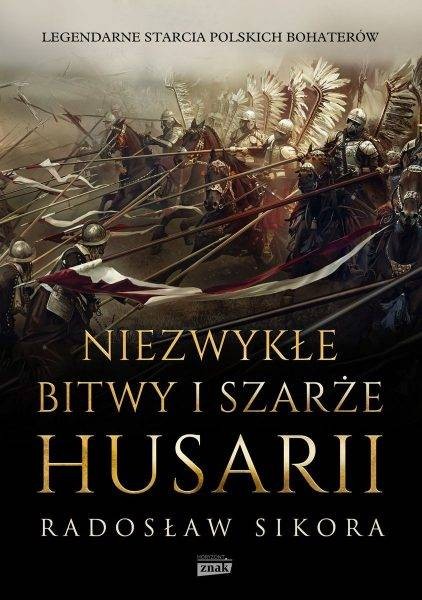
The text is an excerpt from the newest book by Radosław Sikora, "Niez Niez Niezniany bitwy i graże husarii", which has just been published by the Znak Horyzont publishing house.
The key to understanding the course of the battle is getting to know the formation of troops and the terrain where the battle took place. The existing literature has accepted the view that the place of the fight was the bend of the Połonka river. However, I was able to establish that the battle took place over a much larger area.
Knowing the terrain and the formation of troops, we can move on to the description of the fights. Below I will only discuss the clashes of the Battle of Połonka, in which the hussars played a significant role.
"Usari banners with broadswords jumped"
The first episode in which it distinguished itself was the fights for the causeway on the I crossing. The most interesting description of the hussars' charge on Moscow foot, which took over the I crossing, can be found in the diary of Jakub Łoś. Being a companion of the armored banner of the crown prince Wacław Leszczyński, he was directly observing these events.
The battle then began in this way:first Muscovite seven hundred infantry passed through the crossing for which our flashed banners gave way. [...] on this foot the Usarius banners with broadswords jumped and drove them into the water after the first firing that they did not come to the second one, because they were alone [walkers] was drowned in the mud with muskets. The guns started to be fired from Moscow, but they didn't hurt either .
This description, along with others, allows for a relatively accurate reconstruction of the fighting on the crossing I. First, the Poles and Lithuanians withdrew behind the crossings, allowing the enemy's infantry to enter this bottleneck. The infantry, in the strength of two prikases (regiments), numbered about 1,300 soldiers.
After the Muscovites had captured the causeway and their infantry had left its foreground, and after the arrival of five crown dragoons with two cannons on the battlefield, the hussars charged (two banners of the Crown Hussars, totaling 385 wages, i.e. no more than 350 soldiers; however, most likely 250). There were also two Cossack banners in the strike group, but their location and the tasks they were supposed to perform are difficult to establish.
Husars without a copy?
The charging hussars were greeted by a salvo of infantry, but they were not able to stop the Polish cavalry. Before the walkers could fire a second volley and hit the ground their spades, hussars without lances, only with broadswords in their hands, burst into their ranks and drove their foots into the water . Then the cavalry withdrew, and the dragoons started to shoot at the scattered and standing in the water, the dragoons, who were already walking from the wing to the hussars as a meal when the cavalry attack was developing.
Now that the enemy has been wrecked, they proceeded to its final elimination. It would be difficult for the hussars to finish off the opponent themselves, as the Połonka river was surrounded by mud so boggy that in some places the horses sank down to their saddles. So hussar fighting in the swamp was out of the question.
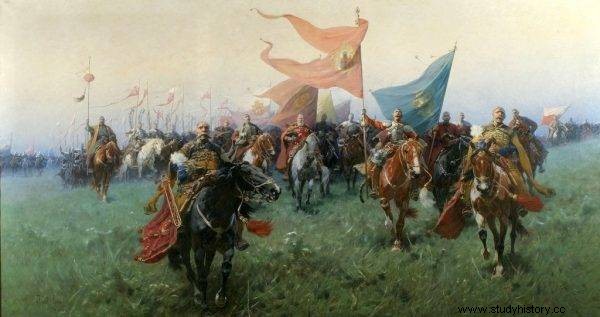
The attack of Polish hussars who did not have copies came on the infantrymen prepared for battle.
It is worth emphasizing that the attack of Polish hussars who did not have copies came on the infantrymen prepared for battle. It turned out to be effective because the Muscovites did not manage to cover themselves with their pikes after the volley of shooters, and also because the losses from musket and artillery fire were minimal.
It is known from the account of Jan Andrzej Morstin that the hussars' charge and the defeat of the enemy took place "without much harm" in the hussars. Let me remind you that Łoś wrote similarly. Since "the guns started to be fired from Moscow, but they did not hurt either," it is obvious that the salvo of infantry that preceded the artillery fire did not hurt either . It can be seen that the volley of the quite numerous infantry brought little effects. This confirms the low effectiveness of the firearms at that time.
However, the fights for crossings did not end there. Attempts were made to push the enemy out for crossing II. And it finally succeeded, although this time the participation of the hussars was marginal, so this struggle is not of interest to us. Instead, I will move on to another match where the hussars shone.
How many enemies could the hussar break through at once?
It happened when Lithuanian troops entered the Moscow, i.e. north-eastern, side of Połonka. It was then a combined attack by the Polish and Lithuanian armies, which drove the opponent's cavalry from the field. By the way, I would like to add that the passage of the Grand Duchy's army through Połonka was protected by the Lithuanian hussars, who at some point charged the infantry defending their passage. They did it very effectively. According to Hetman Sapieha:
[...] mixed the hussars with the lances of the infantry, and so fortunately made that no spar could be broken for nothing . I did not see it, but my trustworthy companion says that six on one copy saw the Muscovites .
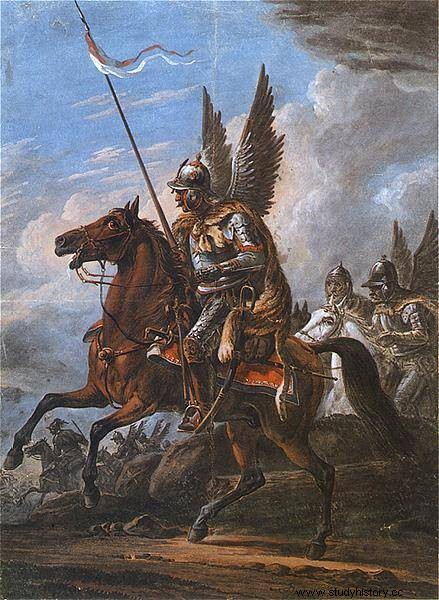
According to Hetman Sapieha:"[...] mixed the hussars with the lances of the infantry, and so happily made no spar break for nothing."
As you can see, the Lithuanian hussars, unlike the crowns, had copies in this battle, and their use in frontal attack once again turned out to be extremely effective. Moments later, the now deprived hussars were attacked from the rear by the Moscow cavalry, which caused quite a lot of problems for the Lithuanians:
[…] we were surprised by driving from behind. With this great difficulty at the hands of the enemy and almost God alone miraculously me [hetman Paweł Sapieha] and with Jmcia Mr. Writer [a fieldman of the Grand Duchy of Lithuania, Aleksander Hilary Połubiński] pulled away from them, because they had already squeezed us. Two companies, P. Chlowanski and Mr. Przeździecki, put us together and quickly opened the way .
Abandoned Infantry
Let us return, however, to the combined attack of the Polish and Lithuanian armies, which drove the enemy from the field. The hussars' attack scenario in this phase of the battle was simple. When the Polish right wing crossed the Połonka River and, having smashed the left wing of the Moscow troops, it emerged behind the enemy army, Czarniecki ordered the Polish center to attack the Moscow cavalry in general.
The attack was supported by the Polish right wing, which hit the Muscovites from behind. The Lithuanians were not idle either - going to the enemy's wing and rear, they tied the enemy's forces in their own section. The center of the Commonwealth's troops was led by the same hussars who in the first phase of the battle broke up infantry.
The Muscovite cavalry, attacked frontally by the Hussars and the Polish banners supporting them, and simultaneously struck from both wings and from the rear, fled from the battlefield, leaving their own infantry to fate.
Under fire
At this point, it is worth paying attention to the walkers, who now were to fight the Poles and Lithuanians in solitude. Before the moment of spending the Moscow cavalry from the field, the infantry supported the cavalry with firearms. Łoś wrote about the dense fire of this infantry, which, however, did not stop the Polish cavalry, because Poles and Lithuanians,
not caring for the dense rifle so the infantry, of which there were eight thousand [this is a gross exaggeration] excellent, as well as armed forces [wearing armor] , one by one they pressed against the enemy .
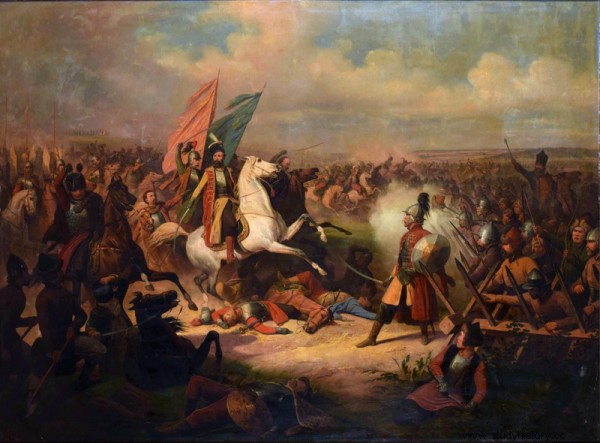
Czarniecki during the Polish-Russian war
The Moscow infantry also had to be involved in direct combat with the Polish cavalry, because, as Wespazjan Kochowski noted:
Moscow had a lot of cannons, the tsarist guards were all fiery people, and our horses were our staples with infantry pikes , and finally the bards, taking too wide with both hands, both the horses and the ride we hacked .
So it can be seen that these infantrymen (their ranks were also pikemen) effectively stopped the charges of the Polish cavalry (including the ones without a copy of the Crown Hussars) as long as the Muscovite cavalry remained on the battlefield. However, when it fled, the infantry retreated to a grove three or four kilometers away.
In this grove, walkers cut trees, thus creating barbed wire to prevent the Polish cavalry from attacking. They defended there for a long time, but when they lost their gunpowder as a result of the Polish shelling, they came out of the grove into the open field, trying to surrender . It was then that Poles (including hussars) attacked Moscow surrendering and the slaughter of infantry.
In the battle of Połonka, as many as 146 enemy banners were captured! It was a happy prelude to further hostilities both in the Grand Duchy of Lithuania and in Ukraine.
Source:
The text is an excerpt from the newest book by Radosław Sikora, "Niez Niez Niezniany bitwy i graże husarii", which has just been published by the Znak Horyzont publishing house.
